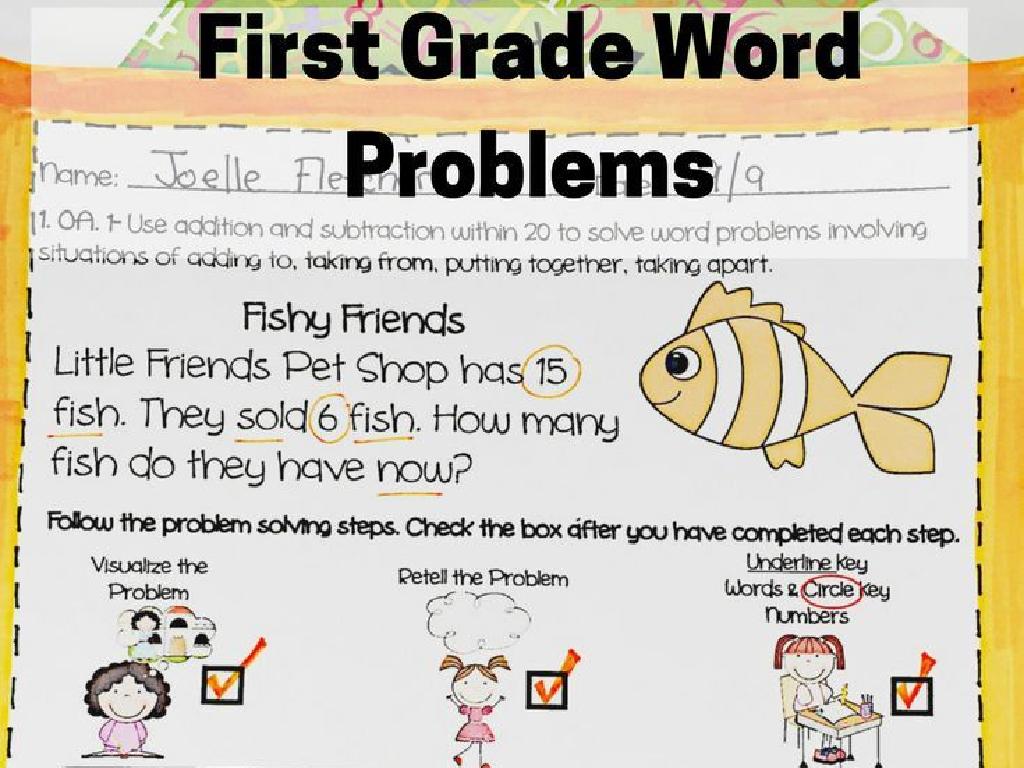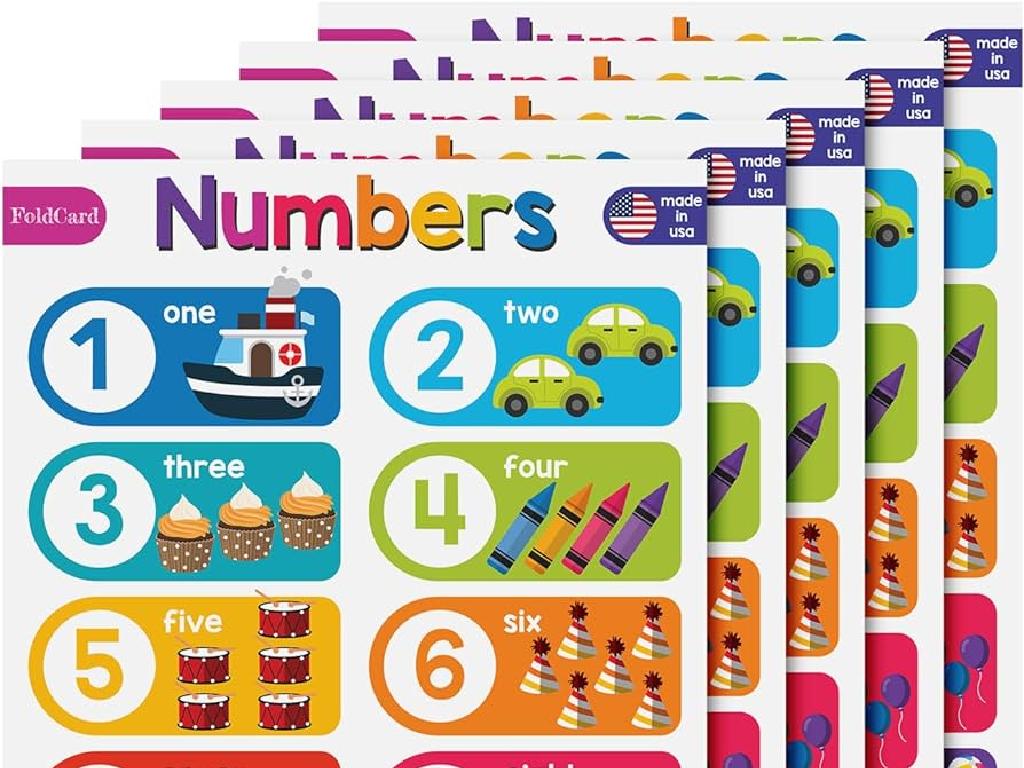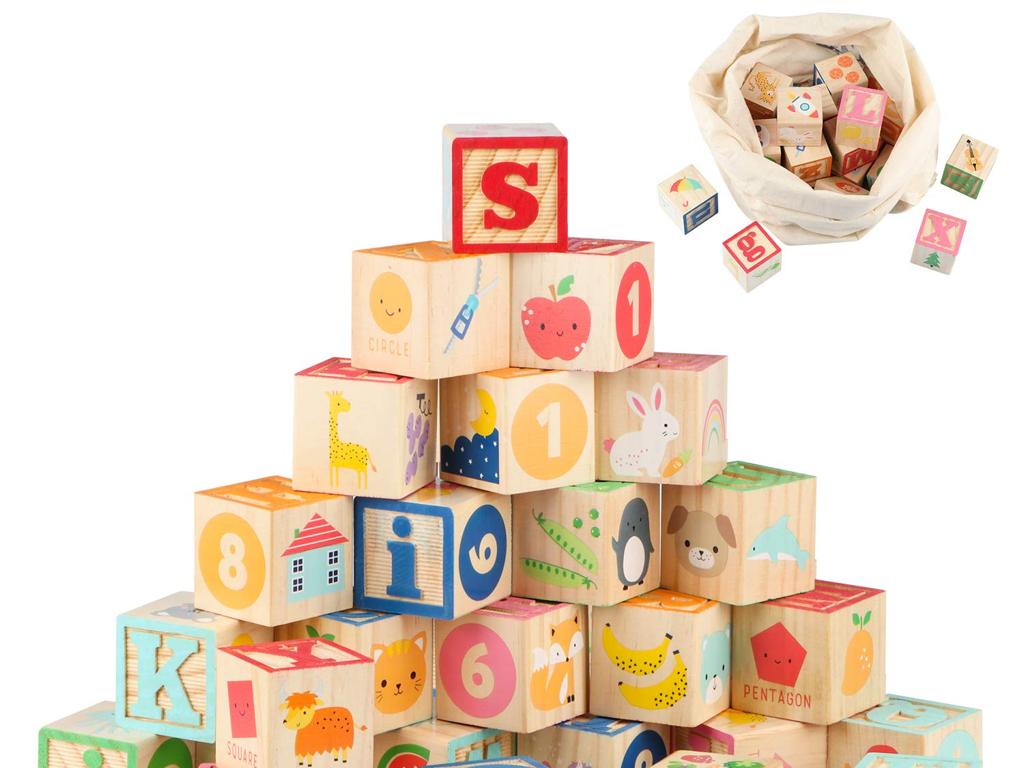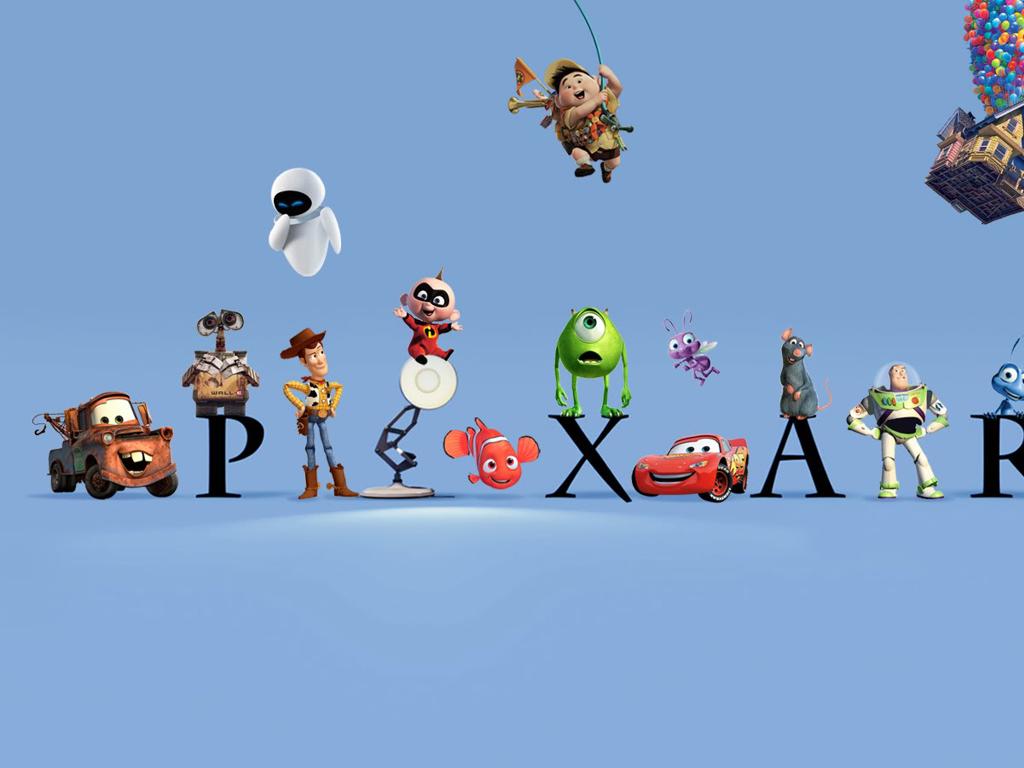Read Questions With Short Vowel Words
Subject: Language arts
Grade: First grade
Topic: Short Vowels
Please LOG IN to download the presentation. Access is available to registered users only.
View More Content
Welcome to Short Vowels!
– Learn about short vowel sounds
– Vowels: A, E, I, O, U
– Short vowels in words
– Short vowels sound like: ‘a’ in cat, ‘e’ in bed, ‘i’ in sit, ‘o’ in hot, ‘u’ in sun
– Practice with examples
– We’ll read questions with words like ‘hat’, ‘pet’, ‘pig’, ‘pot’, and ‘hug’
|
This slide introduces first graders to the concept of short vowel sounds, which are foundational in learning to read and write. Emphasize the importance of vowels in the English language and how they can make different sounds. The short vowel sounds are typically the first vowel sounds children learn. Provide examples for each vowel and encourage students to repeat the sounds after you. Plan a reading activity where students will practice identifying short vowel sounds in words by reading simple questions aloud. This will help them recognize and pronounce short vowel sounds in context.
Meet the Short Vowels
– Each vowel’s short sound
– A, E, I, O, U each have a unique short sound like in ‘cat’, ‘bed’, ‘fish’, ‘pot’, ‘cut’.
– Spotting short vowels in words
– We’ll learn to find these sounds in different words.
– Short vowels’ usual word position
– They are often found in the middle of a word, such as ‘hat’, ‘hen’, ‘pin’, ‘top’, ‘hug’.
– Practice with examples
– Let’s read together and find short vowels in our examples.
|
This slide introduces first graders to the concept of short vowel sounds. Emphasize that vowels are special letters in our alphabet and each one can make a different sound. Use visual aids or physical objects to help students remember the sounds associated with each vowel. Encourage them to practice by spotting the vowels in simple words and pronouncing them aloud. Provide examples where the short vowel sound is in the middle of the word, which is a common placement. During the lesson, engage the students with reading exercises and ask them to identify the short vowel sounds they hear in each word.
Exploring the Short ‘A’ Sound
– ‘A’ as in ‘apple’
– The short ‘A’ sounds like the ‘a’ in ‘apple’, ‘cat’, and ‘hat’.
– Practice saying the ‘a’ sound
– We’ll say the ‘a’ sound together as a class.
– Find the ‘A’ sound in words
– Look for ‘a’ in ‘cat’, ‘mat’, ‘sat’, and ‘bat’.
– Reading questions with ‘A’
|
This slide introduces the short ‘A’ sound to first graders, using the familiar word ‘apple’ as a reference. Engage the class by saying the ‘a’ sound together and then identifying it in simple words. Encourage the students to listen for the short ‘A’ sound in each word and to practice saying them out loud. For the activity, have students read questions that contain short ‘A’ words, such as ‘Can a cat nap on a mat?’ or ‘Has Sam a cap?’ This will help them recognize the sound in the context of a question and improve their phonemic awareness.
Exploring the Short ‘E’ Sound
– Learn the short ‘E’ sound
– It’s like the ‘e’ in ‘elephant’
– Practice making the ‘e’ sound
– We’ll say it together as a class
– Read words with short ‘E’
– Examples: ‘bed’, ‘pet’, ‘red’, ‘net’
– Listen and repeat after me
|
This slide introduces the short ‘E’ sound to first graders, helping them recognize and pronounce it correctly. Start by explaining the sound and comparing it to the ‘e’ in ‘elephant’, a familiar word. Engage the class by making the sound together, ensuring they understand how it feels to produce the sound. Then, move on to reading words that contain the short ‘E’ sound, providing examples and saying them out loud, asking the students to listen and repeat. This interactive approach helps students associate the sound with the letter and words, reinforcing their phonetic skills. Encourage students to practice at home and come up with more words that have the short ‘E’ sound.
Exploring the Short ‘I’ Sound
– The ‘i’ in ‘igloo’: short ‘I’ sound
– Let’s all say the ‘i’ sound together
– Words with the short ‘I’ sound
– Examples: ‘is’, ‘it’, ‘in’, ‘big’
– Practice reading questions with ‘i’
– ‘Is it big?’ ‘Did it fit?’
|
This slide introduces the short ‘I’ sound to first graders, helping them recognize and pronounce the sound correctly. Start by explaining the sound is like the ‘i’ in ‘igloo’. Have the class repeat the sound several times after you to practice. Then, present some simple words that contain the short ‘I’ sound, and use them in example questions. Encourage the students to listen and repeat the words, and then read the example questions aloud. This will help them become familiar with the sound in the context of a sentence. For the activity, you can have students come up with their own questions using the short ‘I’ sound or find items in the classroom that have the short ‘I’ sound in their name.
Exploring the Short ‘O’ Sound
– The ‘o’ in ‘octopus’
– It sounds like the ‘o’ in ‘octopus’, ‘pot’, and ‘top’
– Practice saying ‘o’
– We’ll say the ‘o’ sound as a class
– Read words with ‘o’
– Words like ‘dog’, ‘log’, and ‘frog’ have the short ‘O’
– Listen for the short ‘O’
– Can you hear the ‘o’ sound in ‘stop’ and ‘hop’?
|
This slide introduces the short ‘O’ sound to first graders, using the word ‘octopus’ as a reference because it’s a familiar and engaging word for children. Encourage the students to repeat the sound after you, helping them to understand the sound through repetition. Then, move on to reading words that contain the short ‘O’ sound, ensuring to articulate clearly and pausing after each word to let students identify the sound. Finally, ask the students to listen and identify the short ‘O’ sound in different words, which will help reinforce their understanding and recognition of the sound in various contexts.
Exploring the Short ‘U’ Sound
– ‘U’ as in ‘umbrella’
– Practice making the ‘u’ sound
– Repeat after me: ‘uh-uh-umbrella’
– Identify words with ‘u’
– Find words in our book with the ‘u’ sound
– Examples: ‘up’, ‘sun’, ‘pup’
– ‘Run’, ‘bug’, and ‘mud’ also have the short ‘u’
|
This slide introduces the short ‘U’ sound to first graders, helping them recognize and pronounce the sound correctly. Start by saying the sound together, using ‘umbrella’ as a reference. Engage the class by having them repeat the sound after you. Then, move on to identifying words that contain the short ‘U’ sound. Provide clear examples like ‘up’, ‘sun’, and ‘pup’, and encourage students to come up with more examples from their reading or environment. Use visual aids like pictures of the words to help them associate the sound with the letters. For the activity, have students look for words with the short ‘U’ sound in their books or in sentences you provide on the board.
Reading with Short Vowels
– Practice reading sentences
– Spot the short vowel sounds
– Look for ‘a’ as in ‘cat’, ‘e’ as in ‘bed’, ‘i’ as in ‘sit’, ‘o’ as in ‘pot’, ‘u’ as in ‘cup’
– Understand short vowels usage
– See how short vowels fit into everyday sentences
– Reading enhances comprehension
|
This slide is aimed at helping first graders practice their understanding of short vowel sounds within the context of reading sentences. Encourage the students to identify and pronounce the short vowel sounds they have learned previously. Emphasize the importance of reading as a tool for better comprehension and application of short vowels in words and sentences. During the lesson, guide them through examples and have them read aloud to practice. This will not only reinforce their phonetic skills but also boost their reading fluency.
Reading Questions with Short Vowels
– What are questions?
– Sentences that ask us something.
– Spot the question mark
– Look for the little ‘?’ at the end.
– Reading with short vowels
– We’ll read questions using simple words like ‘cat’, ‘bed’, ‘sit’.
– Practice time!
|
This slide introduces first graders to the concept of questions and the importance of short vowel sounds in reading. Begin by explaining what questions are and how they differ from statements. Emphasize the use of the question mark and its role in punctuation. Engage the class by reading questions that contain short vowel words aloud, helping them to recognize and pronounce these words correctly. Encourage the students to practice reading questions aloud and to listen for the short vowel sounds in each word. This activity will help them become more familiar with the structure of questions and the pronunciation of short vowel words, which are foundational skills in language arts.
Class Activity: Short Vowel Quest
– Let’s go on a vowel quest!
– Find items with short vowel sounds
– Look for items like ‘hat’, ‘pen’, ‘wig’, ‘pot’, ‘bug’
– Draw or write the items found
– Share your quest sheet with the class
|
This activity is designed to help students recognize and understand short vowel sounds in a fun and interactive way. Set up the classroom with various items that have short vowel sounds in their names. Encourage the students to walk around the classroom and identify these items. They can either draw a picture of the item or write the name of the item on their quest sheet. After the activity, have a discussion with the class to review the items found and the short vowel sounds they contain. This will reinforce their phonemic awareness and help them in reading comprehension. Possible variations of the activity could include a timed quest, team quests, or even creating a short story with the items they find.






